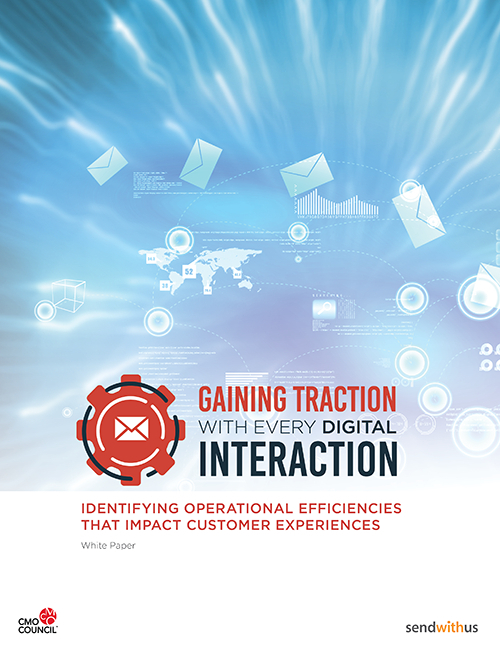There is little argument that an optimized digital experience can capture a customer’s attention, but it can also drive brand advocacy and loyalty among an increasingly discerning and hyper-connected buyer. Gone are the days of simply sending the right message at the right time—today’s digital engagement mandate is to deliver the right message in the right channel at the right time—all of which is now solely dictated by the customer.
In today’s customer journey, new expectations are being set based on where, when and how a customer just interacted with a brand. According to recent CMO Council research, consumers are simply not willing to abide by communications and experiences that fail to deliver value or acknowledge the relationship initiated by the customer. In fact, 23 percent say their top pet peeve around the customer experience is receiving communications that feel more like products stalking them online.
The cost of continued frustration is simple: Customers will walk with their wallets. Nearly half of the consumers surveyed said that they would take their business elsewhere. While 32 percent might take the time to complain, 22 percent would just silently disappear from view, never to do business with the brand again.
The consequences of incorrectly planned and executed customer experiences are clear, so where and how are today’s brand leaders prioritizing strategies and workflow to optimize digital engagements, especially those that are initiated by the customer? Are we sacrificing revenue due to operational inefficiencies and friction? Are our company wide communications consistent and connected to a holistic customer experience? Do these communications reinforce the brand promise and experience? Do messages from different departments conflict and end up confusing the customer? And if so, where and how do the silo walls between marketing and product teams most threaten the bottom line?
The CMO Council, in partnership with Sendwithus, will investigate the key issues, needs and challenges around advancing and optimizing digital engagements. Among the issues to be discussed are:
- The operational requirements between marketing and product teams that are needed to empower collaboration and maximize transactional communication impact
- Missed opportunities for marketers to maximize relationships through connected content strategies across critical touchpoints
- The strategy behind advancing segmentation and fine-tuning personalization across each communication
- Unification across diverse organizational ecosystems to align brand experiences and calls to action
- Leveraging valued and opt-in communications in the age of heightened restrictions and regulations around privacy and customer data










